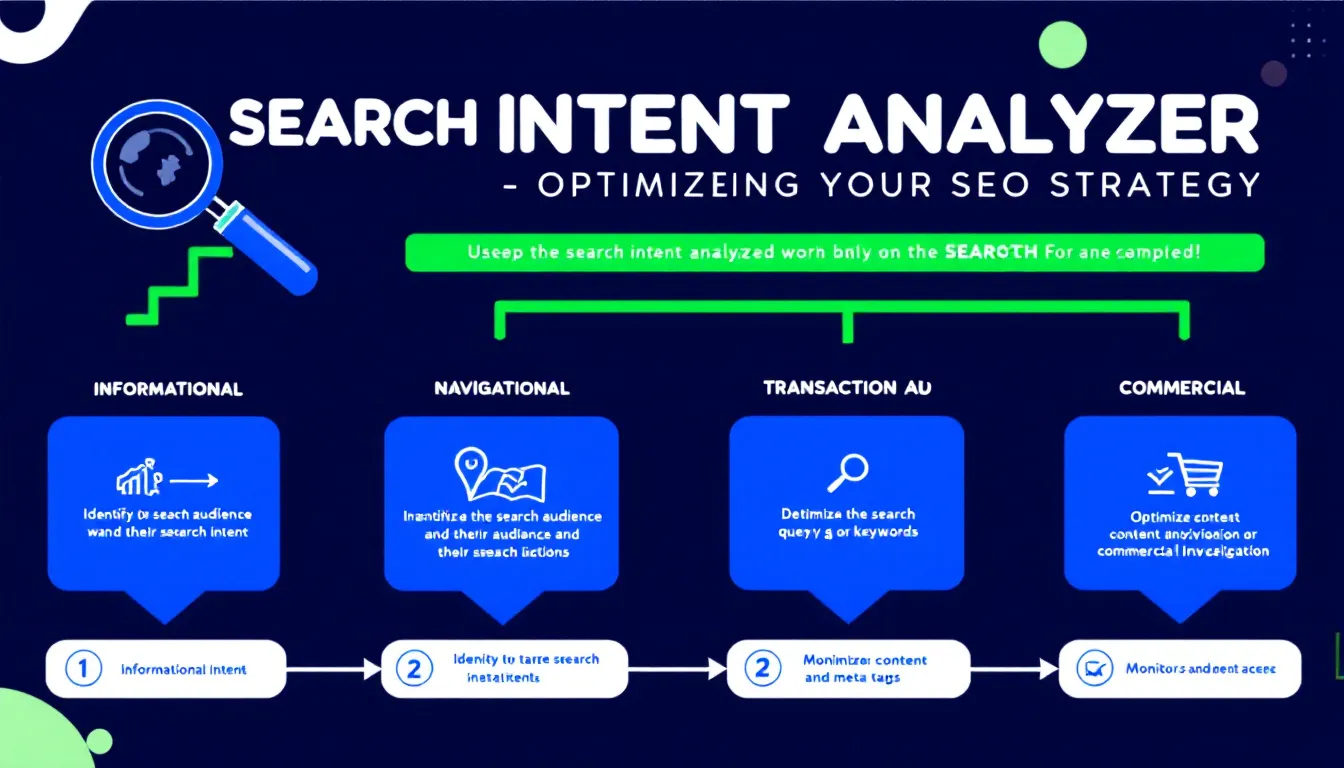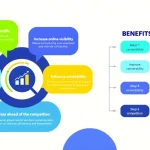Search Intent Analyzer
Is this tool helpful?
How to Use the Search Intent Analyzer Effectively
This tool helps you uncover the underlying intent behind any keyword, giving you clear insights to refine your SEO and content strategy. Follow these simple steps to make the most of it:
- Enter Your Keyword: Type the exact keyword you want to analyze. Example inputs could be “affordable electric bikes” or “best gourmet coffee beans”.
- Add Additional Context (Optional): Provide relevant details to guide the analysis. For instance, “targeting urban commuters interested in eco-friendly transport” or “focus on taste and ethical sourcing for coffee enthusiasts”.
- Click “Analyze Search Intent”: Press the button to start the analysis process.
- Review the Results: View the detailed interpretation of user intent and actionable recommendations displayed below the form.
- Copy and Use Insights: Copy the analysis for easy integration into your content planning or SEO reports.
What Is the Search Intent Analyzer and Why It Matters
The Search Intent Analyzer is a powerful tool designed to reveal the primary goals behind search queries. Understanding search intent helps you create content that matches what users are really looking for, improving engagement and search rankings. By analyzing keywords with relevant context, this tool provides tailored insights that make your SEO strategy more effective and your content more targeted.
Benefits You Gain from Using This Tool
- Clear Understanding of User Motives: Know why users search your keywords and what they expect.
- Improved Content Alignment: Create articles and pages that directly address user needs.
- Higher Conversion Potential: Align content with buyer readiness stages to boost conversions.
- Efficient Resource Use: Focus your efforts on producing the most relevant content types.
- Competitive SEO Advantage: Stay ahead by targeting explicit search intents your competitors miss.
How the Tool Helps in Practice
The Search Intent Analyzer goes beyond simple keyword analysis. It interprets search queries to identify their dominant intent type, providing detailed guidance on optimizing your content accordingly.
Main Types of Search Intent Explained
- Informational: Users want to learn or answer specific questions.
- Navigational: Users aim to find a particular website or page.
- Transactional: Users plan to perform an action, such as purchasing.
- Commercial Investigation: Users research options before a buying decision.
This tool classifies your keyword into one or more categories and recommends content types that satisfy each intent.
Addressing Complex Search Queries
Keywords can carry layered intents. For example, “smart home security systems” may represent:
- Informational intent to understand features and benefits
- Commercial investigation comparing brands
- Transactional intent to buy a system immediately
The tool pinpoints the primary user intent to help you prioritize content focus while considering secondary intents for a fuller strategy.
Identifying Content Gaps and Optimization Opportunities
The analysis highlights areas where your current content may not align with user intent. For instance, if the intent leans heavily informational but your pages only sell products, you’ll see the value in adding detailed educational content. Additionally, by understanding common user questions, you can optimize for featured snippets, attracting more traffic.
Use Cases of the Search Intent Analyzer
Example 1: E-commerce Landing Page Enhancement
If you manage an electronics store and target the keyword “best noise-cancelling headphones,” the tool might reveal commercial investigation and transactional intent. You would then:
- Offer detailed product comparisons and reviews
- Provide clear pricing and purchase options
- Include FAQs focused on noise cancellation technology
Example 2: Blog Content Planning for Travel Websites
For the keyword “top family vacation destinations,” the tool will likely indicate informational intent. Your content can include:
- In-depth guides and destination reviews
- Travel tips and safety advice for families
- Links to relevant services like accommodations and tours
Example 3: Local SEO Strategy
A local gym targeting “24-hour fitness centers near me” will find transactional and navigational intent predominant. Optimization steps include:
- Keeping your Google My Business profile updated
- Creating a dedicated page listing operating hours and memberships
- Providing booking or contact forms to capture leads
Frequently Asked Questions About Search Intent Analysis
Q1: How often should I analyze search intent for my keywords?
Regularly analyze search intent, especially when launching new content or updating old pages. Quarterly reviews help you keep up with changes in user behavior or market trends.
Q2: Can search intent change over time?
Yes, shifting trends, product updates, or news events can alter search intent. Continuous analysis ensures your content remains aligned with current user goals.
Q3: How does understanding search intent impact SEO?
When your content matches what users expect, it improves dwell time, reduces bounce rates, and boosts click-through rates—all key SEO ranking factors.
Q4: Is it common for a single keyword to have multiple intents?
Yes, many keywords span several intents. Prioritize the dominant intent but address secondary intents to capture wider audience segments.
Q5: Can search intent insights help with content ideation?
Absolutely. Understanding what users seek guides you to create relevant blog posts, guides, FAQs, or product pages that answer real questions and needs.
Q6: Does search intent analysis apply beyond written content?
Yes, it informs video scripts, podcasts, infographics, and other formats by aligning content with user expectations and preferred information styles.
Q7: How does search intent relate to voice search optimization?
Voice searches often contain conversational, question-based queries with strong informational intent. Use the tool to identify these and tailor your content to answer specific questions clearly.
Using the Search Intent Analyzer, you can strengthen your SEO strategy by creating user-focused content that matches real search behaviors. Understanding intent is key to helping your audience find the right information and solutions, making your site both more visible and more valuable.
Important Disclaimer
The calculations, results, and content provided by our tools are not guaranteed to be accurate, complete, or reliable. Users are responsible for verifying and interpreting the results. Our content and tools may contain errors, biases, or inconsistencies. Do not enter personal data, sensitive information, or personally identifiable information in our web forms or tools. Such data entry violates our terms of service and may result in unauthorized disclosure to third parties. We reserve the right to save inputs and outputs from our tools for the purposes of error debugging, bias identification, and performance improvement. External companies providing AI models used in our tools may also save and process data in accordance with their own policies. By using our tools, you consent to this data collection and processing. We reserve the right to limit the usage of our tools based on current usability factors.







